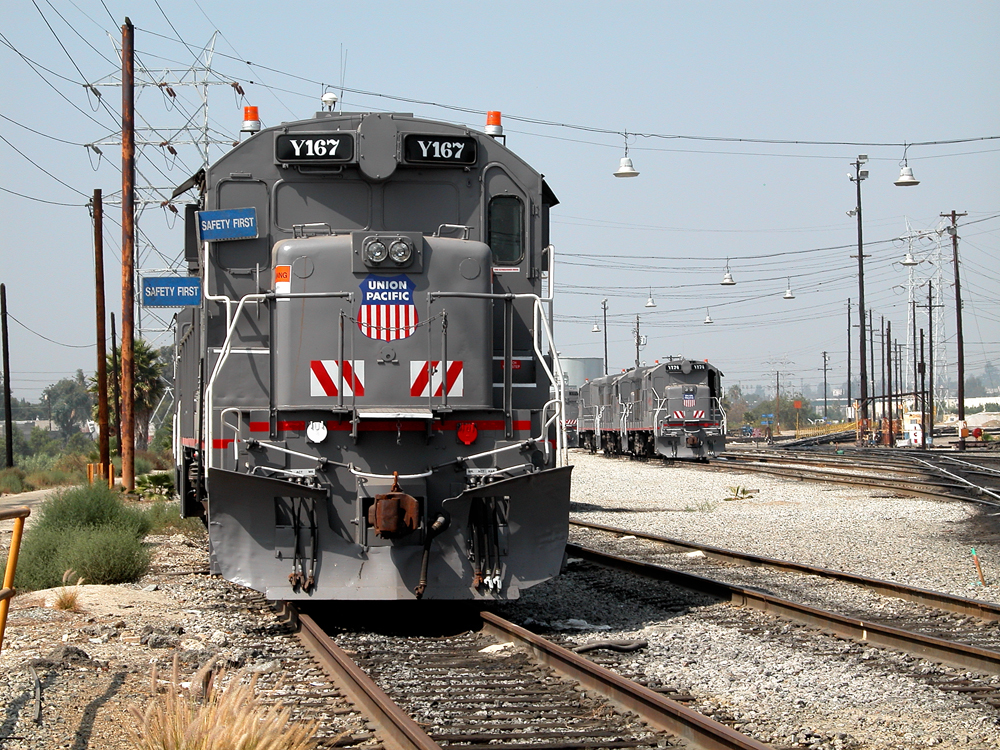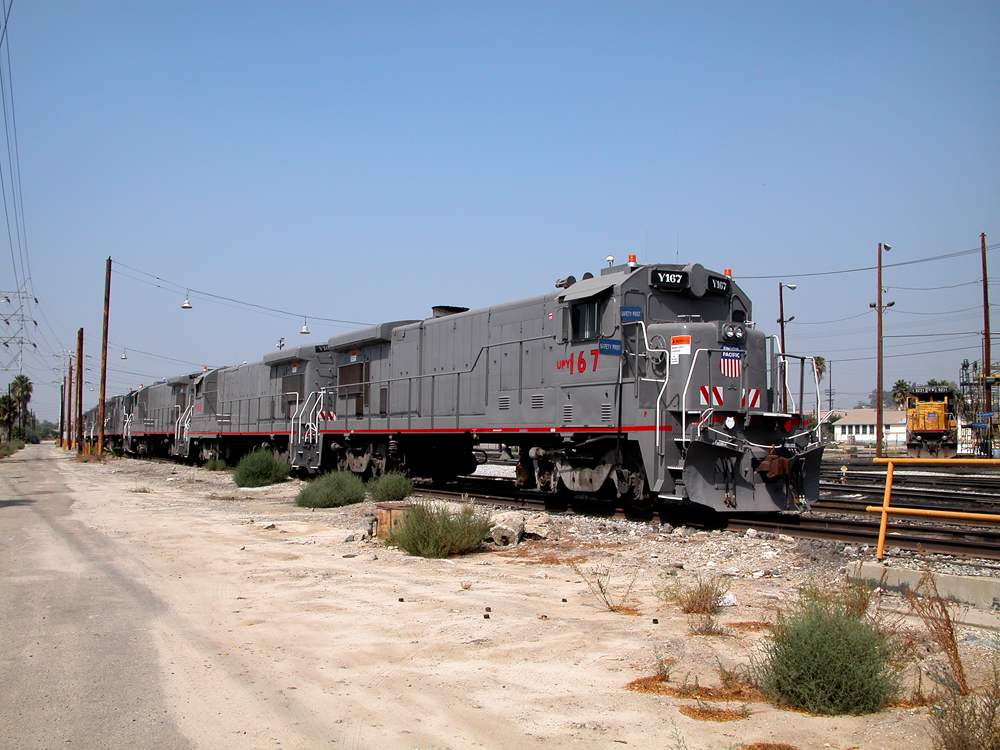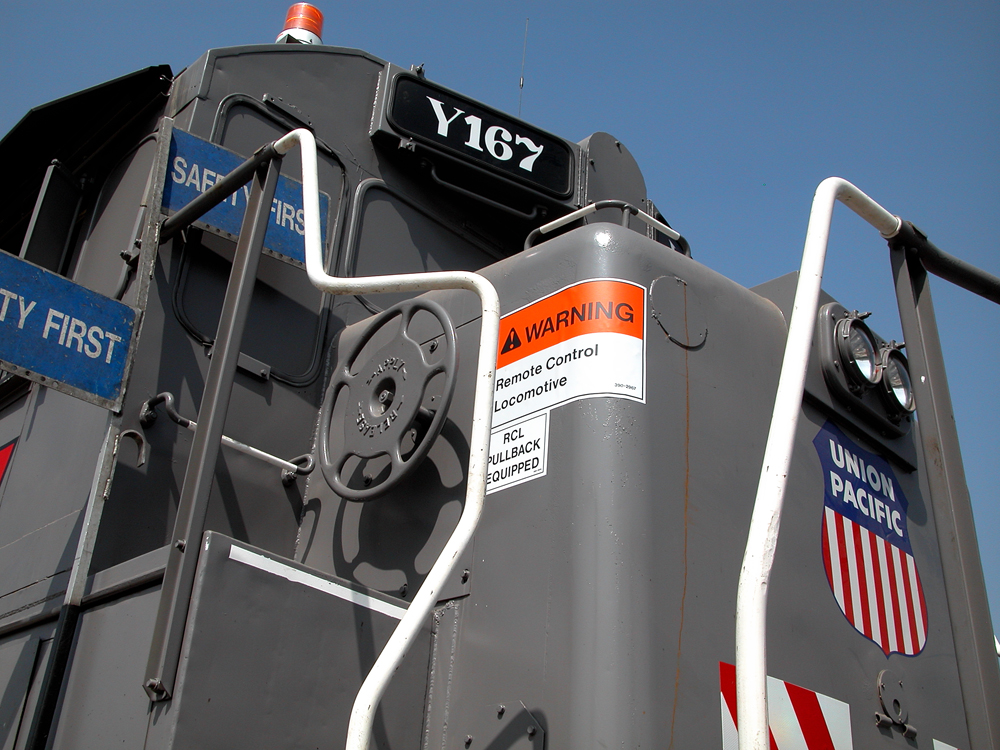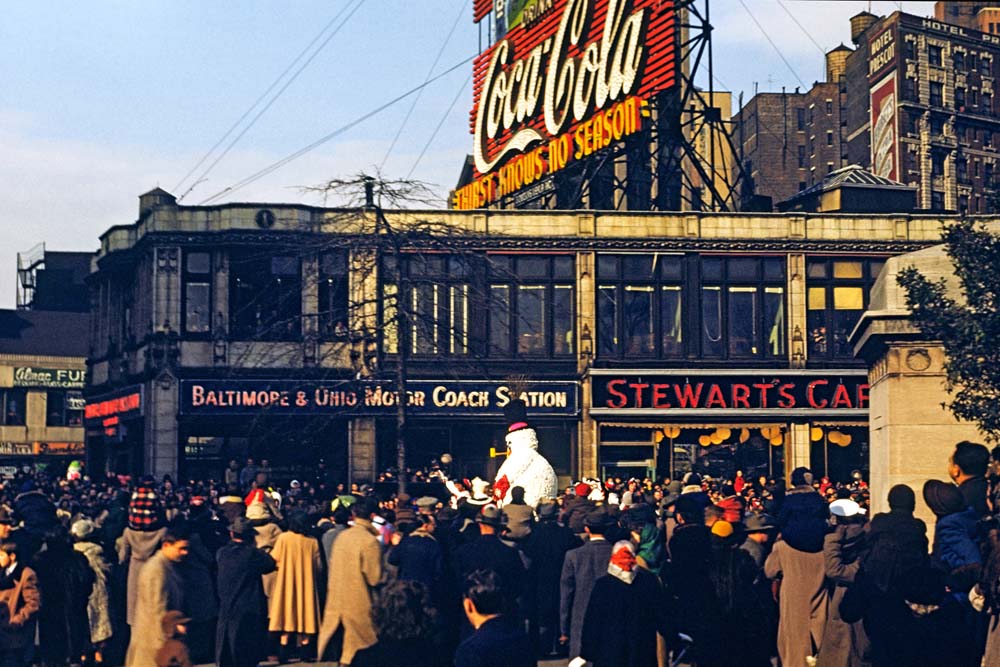Control cars

Always looking for more effective ways to be a railroad, Union Pacific in the early 2000s experimented with what was perceived as a better method of performing switching using remote-control locomotives.
Traditionally, a regular locomotive is outfitted with remote-control equipment and assigned to those duties. That’s all well and good until the equipped unit needs routine servicing or is otherwise offline. Then, another RC-equipped unit will have to be dispatched to take its place. By its very nature, that’s not a recipe for locomotive usage efficiency.
To streamline the situation, Union Pacific embarked on a solution. Instead of the radio equipment being installed on an active locomotive, the railroad created what was referred to as a control car — a retired diesel that was rebuilt as a platform to house the electronics. Connected to a diesel, any diesel, movements are sent to the control car that relays everything to the diesel, thus eliminating the use of tying up a specific diesel.

The railroad dug through its locomotive roster and tapped dozens of retired General Electric four-axle B23-7 and B30-7 road-switcher variants to become the necessary platforms. Painted gray with red accoutrements, their cabs were gutted, windows painted over, and fuel tanks removed. In doing so, their new moniker became Control Car, Remote Control Locomotives.
“It was quicker and less expensive to take retired GEs and convert them rather than install radio control equipment on additional locomotives,” remembers locomotive and railroad consultant Michael Iden, formerly general director of Car and Locomotive Engineering at Union Pacific. “They were scattered around the system. Crews weren’t especially fond of them.”
The units were numbered in the UP system and enjoyed a few years on the railroad before they were put out to pasture, with many of them becoming platform fodder for newly ordered RailPower gensets. With no tears shed, UP had replaced them.

Like the history of locomotives? Check out more articles here.














The fact that the crews wouldn’t like them was probably never even considered by the people who created these things. The concept looked good on paper in someone’s office. Presumably management thought the idea had merit and gave the okay to take locomotives sitting on a deadline and see if it would work. It didn’t, and they’re gone.
The article doesn’t appear to reflect any kind of logic to modify or convert these locomotives. Hard to believe that gutting the cab, removing the fuel tanks and all the other modifications was less expensive than simply installing solid-state electronics on “dedicated” yard switchers. And “the crews didn’t like them”? Since when has UP (or many of its predecessors) considered crew opinions on equipment? More to this than meets the eye. Previous comments are relevant.
so these slugs have all been eliminated?
“Always looking for effective ways to be a railroad, Union Pacific, in the early 2000’s experimented with what was perceived as a better way to perform switching using remote control locomotives.”
Remotes are NOT a better wat to perform switching. Setting a unit up at the beginning of a shift in the yard, performing the various checks and tests, running down each lead to test the pullback option….takes more time than just having an engineer walk out to the unit, give it the required examination, the crew conversing with the YM and getting the paperwork….and starting your days work. You cannot switch as many cars in a given amount of time with a remote. We switched 60 to a hundred cars an hour on a flat lead, made 9o to 95% of the joints in a given track and were building outbounds MUCH faster and GOT AN EARLY QUIT to boot with an experienced engineer at the throttle. EVERY DAY.
Remotes killed the quits which is exactly what they wanted. Doesn’t matter the time involved to do the same work…it’s getting rid of a body, slowing everything down and gumming up an efficient process….remotes in almost every application make little or no sense but managers were sold and TOLD to use them anyway.
Good grief, the old head managers even laugh at them as do we that use and had to use them.
As for GE units…that’s all they are good for, SLEDS. Oh and remove everything, paint the windows and while you are at it weld the doors shut too.
Yes, glad I am retired and feel bad for what I see out there…for only a minute.
Certainly a good idea, but if they’d left the cabs equipped, even without a prime mover, they could be operated manually if necessary and still get the job done, say, if the RC equipment failed one way or another. Note also that cameras are good, but unless you install a bunch of them (likely as many as six for complete visibility) human eyes are still needed for operation. And having a place for the operator to ride on certain switching operations would be an added benefit.